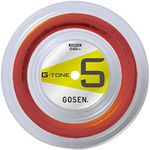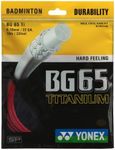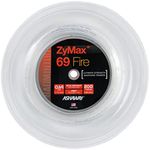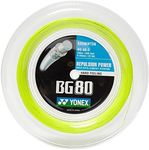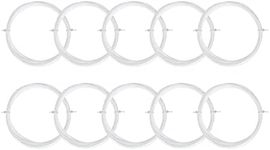Buying Guide for the Best Badminton Strings
Choosing the right badminton strings can significantly impact your game. The strings you select can affect your control, power, and overall feel of the racket. It's important to consider your playing style, skill level, and personal preferences when making your choice. Here are some key specifications to consider when selecting badminton strings and how to navigate them.String TensionString tension refers to how tightly the strings are strung on the racket. This is important because it affects the control and power of your shots. Lower tension (18-23 lbs) provides more power and a larger sweet spot, making it suitable for beginners and intermediate players. Higher tension (24-30 lbs) offers better control and precision, which is preferred by advanced players. Choose a tension that matches your skill level and playing style.
String GaugeString gauge is the thickness of the string, usually measured in millimeters. Thicker strings (0.70 mm and above) are more durable and can withstand more wear and tear, making them ideal for players who play frequently or tend to break strings often. Thinner strings (0.65-0.69 mm) provide better feel and control but may not last as long. Consider how often you play and whether you prioritize durability or performance.
String MaterialBadminton strings are made from various materials, each offering different characteristics. Synthetic gut strings are affordable and provide a good balance of power and control, making them suitable for most players. Multifilament strings offer excellent feel and comfort, ideal for players with arm issues or those seeking a softer touch. Natural gut strings provide the best performance in terms of power and control but are more expensive and less durable. Choose a material that aligns with your playing needs and budget.
String CoatingString coating can affect the durability and feel of the strings. Some strings come with a special coating to enhance durability and reduce friction, which can prolong the life of the strings. Others may have a textured coating to improve grip and spin. If you tend to break strings frequently, look for strings with a durable coating. If you want more control over your shots, consider strings with a textured coating.
String ColorWhile string color does not affect performance, it can be a personal preference for many players. Some players choose colors that match their racket or personal style. Others believe that certain colors may help with visibility during play. Ultimately, the color of the strings is a matter of personal preference and does not impact the technical aspects of your game.

